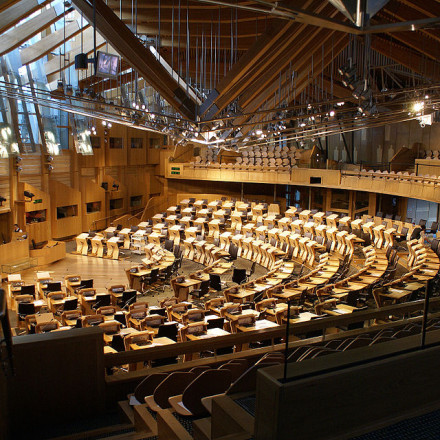
A 34 per cent swing in Kirkcaldy and Cowdenbeath, 36 per cent in Coatbridge, Chryston and Bellshill and some 39 per cent in Glasgow North East.
The BBC’s swingometer for election night last year only went as high as 30 per cent.
Jeremy Vine seemed, at times, helpless beneath the graphic – high-tech, state of the art, and utterly redundant at explaining the scale of the landslide in Scotland. The SNP overturned dozens of decades-old Labour majorities with astonishing ease, leaving only two seats where the party now remains within 5,000 votes of the nationalists.
In a way, the limit of that swingometer was useful in forcing us to come to terms with what I had described three weeks before polling day as “a cataclysm”. I also said that I didn’t “expect Labour to be wiped out in Scotland”. Party sources told me that hanging on to four or five seats was probable, with seven constituting a very good night. In fact, Labour won just one.
So when I see now see polls suggesting Scottish Labour will come third on May 5, trailing even the Scottish Tories, I’m hesitant to dismiss these gloomy forecasts. When I’m told that Labour could lose every single constituency, returning MSPs only in the list section, I no longer consider it far-fetched.
The chances are, I suspect, that Labour will just edge second place. That’s important, not just for symbolism, but for retaining the status of official opposition at Holyrood. Yet in the longer-term, it is of less consequence; what really matters is that there won’t be much in it. Labour and the Conservatives will draw similar levels of support, and will have a similar number of MSPs, probably 20 or thereabouts.
The rebuilding process Scottish Labour must go through will barely have begun by Thursday, but we will at least have our first confirmation that there is not an easy fix for the problems. The more left-wing tone of the campaign has not yielded the success some had expected.
This is, in part, due to the toxicity of the Labour brand. Last month Scottish Labour launched an ambitious manifesto, not encumbered with the caution that typified last year’s UK general election offer – but it is not expected to be in a position to enact the policies either.
With a major focus on education, one of Scottish Labour’s recent pledges is to provide a breakfast club in every school. However, polling revealed that while individual policies are popular, voters in Scotland turn against them once they realise they come from Labour. A common joke now is that Scottish Labour could promise a holiday in Barbados for every voter, and the SNP would still win by a landslide.
But rapid and kneejerk reactive changes will not do anything to solve the problem. Kezia Dugdale is the party’s fifth leader in the two parliamentary terms since 2007. The longest serving in that time was Iain Gray, the only one to scrape, barely, over the three year mark. The revolving door of unpopularity cannot be allowed to continue. The SNP look stable and competent, and there is no one – no one – who can simply expect to turn things around.
May 5 will be another tough day for the Scottish Labour Party, possibly the toughest yet, but one that to an extent must be expected and accepted. The party’s problem is bigger than a single election.




More from LabourList
‘The Employment Rights Bill is a massive step forward – but we’re not done delivering for working people’
‘Britain’s G20 Presidency is Labour’s chance to lead a global reset’
Is Andy Burnham’s star dimming amid repeated hints at leadership ambition?